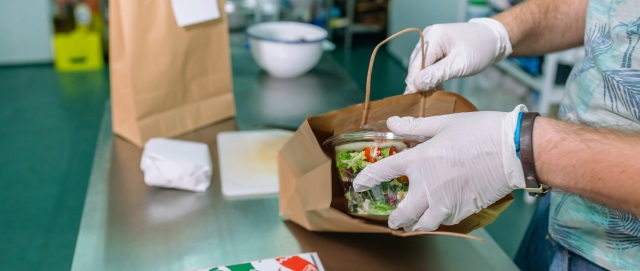Supply chain shortages still affecting industry

Everything from proteins to packaging materials are currently in short supply.
Ask any restaurateur right now and he or she will tell you pandemic-related supply-chain shortages, along with increased food costs, are two things keeping them up at night.
Everything, from proteins to dish soap to fryer oil, packaging materials, and in some cases, even replacement parts for kitchen equipment, are in short supply. And, when a restaurateur can get his or her hands on those items, they can’t seem to get enough of them and are paying much higher prices for what they can get.
“My only advice right now is to stay nimble and accept that making daily adjustments will remain the nature of the game—at least for the first quarter of the year,” says Dan Simons, co-owner of Founding Farmers Restaurants in Washington, D.C.
“The items we’re expecting to run short will catch up, but then we’ll get surprised by the next shortage we didn’t anticipate. So be it. I keep reminding myself I’m fortunate to have these challenges and that I have a team to face them with.”
Expect more supply issues, menu price inflation
Hudson Riehle, the Association’s senior vice president of research, says operators should expect menu price inflation to remain historically high as supply challenges and high food costs continue well into 2022.
“There’s no doubt that disruptions in the supply chain are impacting restaurant businesses,” he says. “Late last year [November 2021], an Association survey found that 96% of operators experienced supply delays or shortages of key food or beverage items, and that the impact was felt across all segments of the industry. Furthermore, another 8 in 10 operators said they experienced supply delays or shortages of equipment or service items."
Learning to pivot when necessary
Because of the shortages, many restaurants have been forced to alter menus and change offerings on a regular basis, says Anissa Mandell, supply chain senior vice president for Atlanta-based Focus Brands.
“There's definitely frustration out there,” she says. “It’s tough to plan or predict your day when you don’t know if you’re going to get product in or not. And when you do get your delivery, you don't know if you’re going to get 100% of everything you’ve ordered. If 5% of your items don't show up, you have to adjust. Sometimes that's difficult to do, especially in our world where there’re so many proprietary products you can't just pick up at the local market.”
Mandell adds that the company has experienced some temporary outages, with items such as packaging.
“On any given day, we might have a challenge with cups," she says. "That’s one area where we're acting on opportunities that could help us deal with any shortages we might have.”
In addition to shortages, restaurateurs say they are paying higher prices for different food items, but Founding Farmers’ Simons says he thinks prices will start to come down by 2Q of 2022.
“I’m expecting more price fluctuation throughout this first quarter, primarily because of the disruption driven by worker shortages as companies and families—from the field to the plate—deal with COVID-19 related illnesses,” he says. But as the omicron variant peaks, I believe things will start to settle down, but that’s only if there isn’t a new variant.”